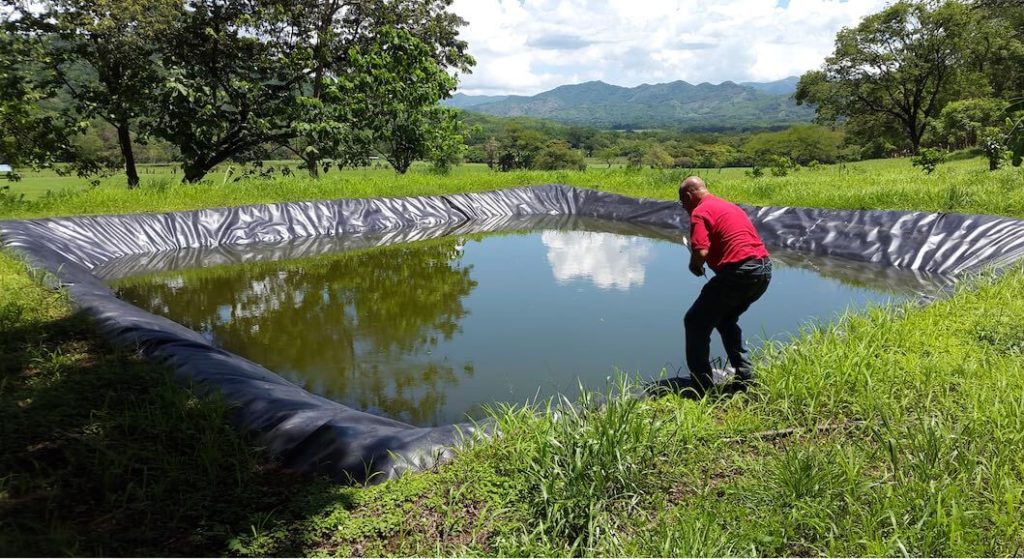
Use of numerical modeling in water, management to extract water in arid areas, design of drainage and sewerage systems of large cities, environmental impact of mining and solid waste management, development of numerical models and their application in water management, and opening of institutions and organizations related to integrated water resources management (IWRM), were part of the topics addressed by specialists from five countries, on October 13 during the virtual workshop Perspectives of numerical groundwater modeling for integrated water resource management in Costa Rica.
The activity was organized collaboratively by the GREAT project, in which the Water Resources Center for Central America and the Caribbean (Hidrocec-UNA), the Waste Management Laboratory of the School of Chemistry (Lagede-UNA), the National Groundwater, Irrigation and Poison Service (Senara) and the Mesoamerican Center for the Sustainable Development of the Dry Tropics of the Chorotega Regional Headquarters of the National University (Cemede-UNA) participate. This meeting brought together representatives of 18 public institutions, non-governmental organizations and academia, from five countries.
Jaime Garfias Soliz, an expert at the Autonomous University of the State of Mexico (UAEM), spoke about the main applications of numerical groundwater modeling in Mexico and shared the results of a model developed in that country. He specified that with this tool, management is currently carried out to extract water in arid areas, drainage and sewerage systems are designed in cities such as Mexico City, and studies are carried out on the environmental impact study of mining and solid waste management. In these cases, modeling can prevent groundwater contamination.
Roberto Ramírez Chavarría, director of the Water Management and Research Unit of (Senara), presented the results of an online consultation that was made to 21 national and international experts on the most important aspects for the development of numerical models and their application in water management. As part of the activities, the results were discussed in working groups and priority was given to some of the aspects that have to be addressed in Costa Rica to strengthen water management using this type of tool; generating complete and reliable technical information, through conceptual models at appropriate scales and in a language and space accessible to the target audience, were part of the priority factors that coincided on to consolidate the use of numerical modeling.
Marco Barahona Palomo, coordinator of the postgraduate course in hydrogeology at the University of Costa Rida (UCR), emphasized the difficulty of obtaining quality information to face the challenges of management: “The purpose is not to build a numerical model, but to develop a dynamic management support tool, which allows decision makers and communities to improve water management.”
The second factor of greatest consensus among the workshop participants was the opening of institutions and organizations related to IWRM around the use, access to information and training of professionals to implement new technological tools. Liliam Álvarez Rojas, representative of the private sector, and Yemerith Alpízar Segura, of the Center for Research in Geological Sciences of the UCR, agreed to highlight the importance of flexibility for the use of new methodologies and tools such as modeling to support water management in communities.
In the same vein, Carolina Alfaro Chinchilla, researcher of the GREAT project and the LAGEDE-UN Waste Management Laboratory, stressed that “sharing experiences on the numerical modeling of groundwater favors an adequate environment to work on aspects that must be addressed with priority in Costa Rica, if we want to plan the management of the water resource with technical and scientific criteria.” Hence, the importance of involving all stakeholders is necessary to facilitate innovations that guarantee national and regional water security.
Andrea Suárez Serrano, coordinator of the Water Resources Center for Central America and the Caribbean of the National University (Hidrocec-UNA): highlighted the workshop that it has been “a very valuable opportunity to exchange opinions among experts on the existing needs in Costa Rica, to advance in the application of numerical groundwater modeling, as a tool or inputs to improve IWRM.”
The workshop ended with a synthesis of the discussions on the factors of importance for advancing numerical modeling in Costa Rica. In addition, agreements were concluded to develop some priority aspects. For example, public universities and SENARA committed to providing training in the use of free software for numerical modeling.
This event was an activity of the GREAT technical cooperation project, funded by the Ministry of Science, Innovation, Technology and Telecommunications (MICITT of Costa Rica) and the Federal Ministry of Education and Research (BMBF of Germany) and implemented in Costa Rica by the National University (UNA), with the support of the Water Management and Research Unit of the National Groundwater, Irrigation and Drainage Service (Senara) and the Technical University of Dresden (TUD).
*Reported by Dr. Pável Bautista, CEMEDE-UNA
